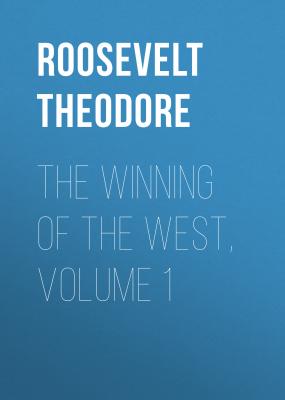ТОП просматриваемых книг сайта:
The Winning of the West, Volume 1. Roosevelt Theodore
Читать онлайн.Название The Winning of the West, Volume 1
Год выпуска 0
isbn
Автор произведения Roosevelt Theodore
Жанр История
Издательство Public Domain
Again, the loose governmental system of the Indians made it as difficult to secure a permanent peace with them as it was to negotiate the purchase of the lands. The sachem, or hereditary peace chief, and the elective war chief, who wielded only the influence that he could secure by his personal prowess and his tact, were equally unable to control all of their tribesmen, and were powerless with their confederated nations. If peace was made with the Shawnees, the war was continued by the Miamis; if peace was made with the latter, nevertheless perhaps one small band was dissatisfied, and continued the contest on its own account; and even if all the recognized bands were dealt with, the parties of renegades or outlaws had to be considered; and in the last resort the full recognition accorded by the Indians to the right of private warfare, made it possible for any individual warrior who possessed any influence to go on raiding and murdering unchecked. Every tribe, every sub-tribe, every band of a dozen souls ruled over by a petty chief, almost every individual warrior of the least importance, had to be met and pacified. Even if peace were declared, the Indians could not exist long without breaking it. There was to them no temptation to trespass on the white man's ground for the purpose of settling; but every young brave was brought up to regard scalps taken and horses stolen, in war or peace, as the highest proofs and tokens of skill and courage, the sure means of attaining glory and honor, the admiration of men and the love of women. Where the young men thought thus, and the chiefs had so little real control, it was inevitable that there should be many unprovoked forays for scalps, slaves, and horses made upon the white borderers.86
As for the whites themselves, they too have many and grievous sins against their red neighbors for which to answer. They cannot be severely blamed for trespassing upon what was called the Indian's land; for let sentimentalists say what they will, the man who puts the soil to use must of right dispossess the man who does not, or the world will come to a standstill; but for many of their other deeds there can be no pardon. On the border each man was a law unto himself, and good and bad alike were left in perfect freedom to follow out to the uttermost limits their own desires; for the spirit of individualism so characteristic of American life reached its extreme of development in the back-woods. The whites who wished peace, the magistrates and leaders, had little more power over their evil and unruly fellows than the Indian sachems had over the turbulent young braves. Each man did what seemed best in his own eyes, almost without let or hindrance; unless, indeed, he trespassed upon the rights of his neighbors, who were ready enough to band together in their own defence, though slow to interfere in the affairs of others.
Конец ознакомительного фрагмента.
Текст предоставлен ООО «ЛитРес».
Прочитайте эту книгу целиком, купив полную легальную версию на ЛитРес.
Безопасно оплатить книгу можно банковской картой Visa, MasterCard, Maestro, со счета мобильного телефона, с платежного терминала, в салоне МТС или Связной, через PayPal, WebMoney, Яндекс.Деньги, QIWI Кошелек, бонусными картами или другим удобным Вам способом.

